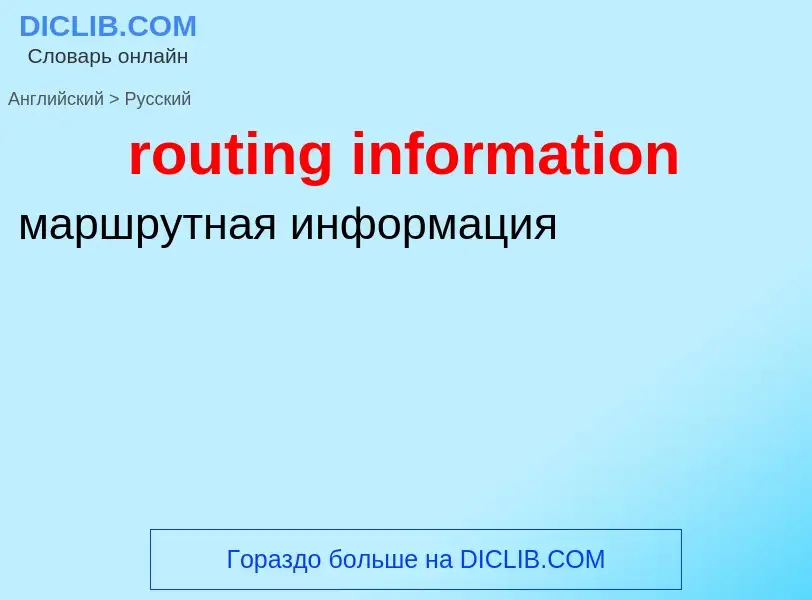Перевод и анализ слов искусственным интеллектом ChatGPT
На этой странице Вы можете получить подробный анализ слова или словосочетания, произведенный с помощью лучшей на сегодняшний день технологии искусственного интеллекта:
- как употребляется слово
- частота употребления
- используется оно чаще в устной или письменной речи
- варианты перевода слова
- примеры употребления (несколько фраз с переводом)
- этимология
routing information - перевод на русский
2) маршрутизация (процесса)
3) маршрутно-технологическая карта
4) назначение маршрута (перевозок)
- controlled routing
- free routing
- heuristic routing
- hierarchical routing
- hot-potato routing
- internetwork routing
- intranetwork routing
- key routing
- message routing
- priority routing
- source routing
['ru:tiŋ]
общая лексика
маршрутизация
процесс или метод определения и назначения пути доставки пакетов (сообщений) через одну или более сеть по наиболее подходящему маршруту
трассировка печатных проводников
в САПР электроники
направление связи
трасса
строительное дело
трассирование, прокладка трассы
расчёт трансформации паводочной волны по длине водотока
flood routing
расчёт трансформации паводка
пропуск паводка
нефтегазовая промышленность
прокладка трассы (трубопровода)
Смотрите также
существительное
общая лексика
трасса
курс
вырезание изделия неправильной формы
техника
схема движения
маршрутизация
трассировка
программирование
рассылка материалов по назначению
Определение
Организация перевозок маршрутными поездами.
Википедия
Routing is the process of selecting a path for traffic in a network or between or across multiple networks. Broadly, routing is performed in many types of networks, including circuit-switched networks, such as the public switched telephone network (PSTN), and computer networks, such as the Internet.
In packet switching networks, routing is the higher-level decision making that directs network packets from their source toward their destination through intermediate network nodes by specific packet forwarding mechanisms. Packet forwarding is the transit of network packets from one network interface to another. Intermediate nodes are typically network hardware devices such as routers, gateways, firewalls, or switches. General-purpose computers also forward packets and perform routing, although they have no specially optimized hardware for the task.
The routing process usually directs forwarding on the basis of routing tables. Routing tables maintain a record of the routes to various network destinations. Routing tables may be specified by an administrator, learned by observing network traffic or built with the assistance of routing protocols.
Routing, in a narrower sense of the term, often refers to IP routing and is contrasted with bridging. IP routing assumes that network addresses are structured and that similar addresses imply proximity within the network. Structured addresses allow a single routing table entry to represent the route to a group of devices. In large networks, structured addressing (routing, in the narrow sense) outperforms unstructured addressing (bridging). Routing has become the dominant form of addressing on the Internet. Bridging is still widely used within local area networks.

